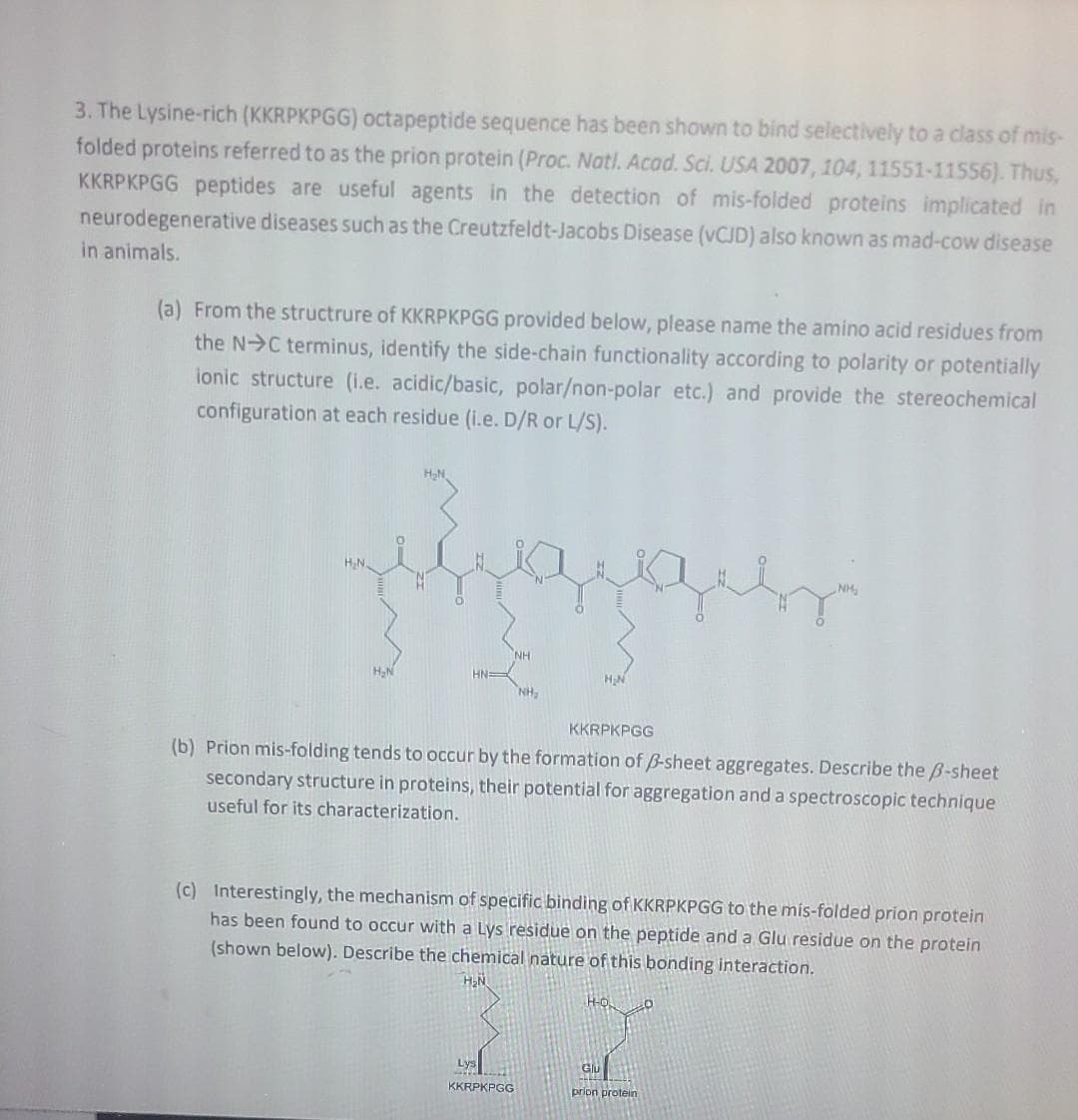3. The Lysine-rich (KKRPKPGG) octapeptide sequence has been shown to bind selectively to a class of mis folded proteins referred to as the prion protein (Proc. Natl. Acad. Sci. USA 2007, 104, 11551-11556). Thus, KKRPKPGG peptides are useful agents in the detection of mis-folded proteins implicated in neurodegenerative diseases such as the Creutzfeldt-Jacobs Disease (VCJD) also known as mad-cow disease in animals.
3. The Lysine-rich (KKRPKPGG) octapeptide sequence has been shown to bind selectively to a class of mis folded proteins referred to as the prion protein (Proc. Natl. Acad. Sci. USA 2007, 104, 11551-11556). Thus, KKRPKPGG peptides are useful agents in the detection of mis-folded proteins implicated in neurodegenerative diseases such as the Creutzfeldt-Jacobs Disease (VCJD) also known as mad-cow disease in animals.
Biology: The Dynamic Science (MindTap Course List)
4th Edition
ISBN:9781305389892
Author:Peter J. Russell, Paul E. Hertz, Beverly McMillan
Publisher:Peter J. Russell, Paul E. Hertz, Beverly McMillan
Chapter15: From Dna To Protein
Section: Chapter Questions
Problem 15TYK
Related questions
Question
5

Transcribed Image Text:3. The Lysine-rich (KKRPKPGG) octapeptide sequence has been shown to bind selectively to a class of mis-
folded proteins referred to as the prion protein (Proc. Natl. Acad. Sci. USA 2007, 104, 11551-11556). Thus,
KKRPKPGG peptides are useful agents in the detection of mis-folded proteins implicated in
neurodegenerative diseases such as the Creutzfeldt-Jacobs Disease (VCJD) also known as mad-cow disease
in animals.
(a) From the structrure of KKRPKPGG provided below, please name the amino acid residues from
the N C terminus, identify the side-chain functionality according to polarity or potentially
ionic structure (i.e. acidic/basic, polar/non-polar etc.) and provide the stereochemical
configuration at each residue (i.e. D/R or L/S).
H2N
HN.
NH
HN=
NH,
HN
HN
KKRPKPGG
(b) Prion mis-folding tends to occur by the formation of B-sheet aggregates. Describe the B-sheet
secondary structure in proteins, their potential for aggregation and a spectroscopic technique
useful for its characterization.
(c) Interestingly, the mechanism of specific binding of KKRPKPGG to the mis-folded prion protein
has been found to occur with a Lys residue on the peptide and a Glu residue on the protein
(shown below). Describe the chemical nature of this bonding interaction.
HN
H-O
Lys
Glu
KKRPKPGG
prion protein
Expert Solution
This question has been solved!
Explore an expertly crafted, step-by-step solution for a thorough understanding of key concepts.
Step by step
Solved in 4 steps

Recommended textbooks for you

Biology: The Dynamic Science (MindTap Course List)
Biology
ISBN:
9781305389892
Author:
Peter J. Russell, Paul E. Hertz, Beverly McMillan
Publisher:
Cengage Learning

Biology: The Dynamic Science (MindTap Course List)
Biology
ISBN:
9781305389892
Author:
Peter J. Russell, Paul E. Hertz, Beverly McMillan
Publisher:
Cengage Learning